Four battles of "Glory", or Efficiency of mine-artillery positions (end)
There is no doubt that unarmored minefields seriously hamper the actions of the enemy, but cannot stop him on their own. Even very dense minefields, such as those put up in the Irbensky Strait as of 1917, were nevertheless passed by the German minesweepers, although it took several days to do this.
In no case did light forces, such as gunboats, destroyers and submarines, could play any significant role in the defense of mine-artillery positions. Their role was limited to patrols and reconnaissance, but in no case were they able to prevent the trawling.
Here, however, should make a substantial reservation. Mikhail Koronatovich Bakhirev believed that the mine position in the Irbensky Strait was set up very badly:
1) the south coast of the strait belonged to the enemy and was heavily fortified;
2) a large area of the field made it possible for the enemy to carry out sweeping works all the time, and we could not catch the moment when he really intended to force the passage; besides, thanks to this field, we were deprived of the possibility of continuous observation of enemy minesweepers;
3) these enemy works could be carried out completely without the support of their fleet;
4) during the breakthrough of the enemy thanks to the arrangement of our position, all the time was guaranteed from our attacks by destroyers and submarines, as it was protected by our barriers parallel to the shore (this was, in my opinion, a huge mistake);
5) the enemy had the opportunity to make along the coast itself the beaten channel and monitor its good condition;
6) we had no opportunity to expel our destroyers and submarines to the W, at sea and, consequently, unexpectedly for the enemy from the Gulf of Riga.
7) this field made it impossible for us to conduct exploration in the Baltic Sea from the Gulf of Riga.
It is possible that if the mine position corresponded to the wishes of M.K. Bakhirev, light forces could be used with greater efficiency. However, there are certain doubts.
Of course, if the minefields were set perpendicular to the coast (across the strait), there would be free mines between them, of which the defenders would know, and the advancing ones would not. In this case, it would be possible to conduct a group of destroyers under the coast, and then undertake an attack, moving outside the minefields. But the German minesweepers worked under the protection of larger ships, such as light cruisers, armadillos and dreadnoughts, which were quite able, by developing intensive fire, to make such an attack impossible. "Glory" twice (3 August 1915 g. And 4 October 1917 g.) Drove the enemy destroyers from the maximum firing distance. There is no doubt that two battleships or a dreadnought, with the support of two light cruisers (namely, such a detachment was usually assigned to directly cover the trawl caravan) would cope with this task much faster and more efficiently.
As for submarines, it would seem that for them the forcing of minefields by the enemy represents almost ideal conditions for an attack. The main problem of the submarine is that it is not able to get close to the enemy warship in the surface position (drown), and under water at the boat is too low speed for this. Therefore, by and large, a submarine can attack a warship if it is by chance within the reach of its torpedo weapons. But the breakthrough of the minefields presents additional possibilities for the boat.
First, a significant part of the enemy detachment is usually located in front of minefields, awaiting the moment when the fairway will be rattled. Accordingly, the submarine has enough time to get close to the enemy and attack him. If the submarine is behind the minefields, then it can choose a suitable position, because the enemy does not know where the minefield ends and whether a new one will not start, why you have to be cautious and move at low speed behind the trawl caravan even where the mine is not.
However, the only successful case of submarine use was the attack of the German Indianola minesweeper base, which resulted in damage and was forced to refuse to participate in the October 4 1917 battle. And this was despite the fact that Moonzund took part in the defense very experienced British crews that used very advanced for the time boats. To a certain extent, such a disappointing result was the result of the fact that the Germans attracted a sufficient number of destroyers to protect their larger ships. But in other cases, the submarines failed. Thus, in 1915, the fleet command sent E-1, E-9, Bars and Gepard to the Irbensky Strait. On the morning of August 10, two armored cruisers (the Roon and Prince Heinrich), accompanied by two light cruisers, approached the Irben Strait. In a short battle, they drove away the Russian destroyers, and proceeded to the shelling of Cape Tserel. In total, German cruisers fired 40 minutes, during which time the E-1 and the Cheetah three times tried to attack the German cruisers. Alas, without success.
It can be assumed that light forces are able to play a certain role in the defense of mine-artillery positions, but they cannot defend them on their own.
As for the coastal artillery, she almost didn’t show herself in Moonzund’s battles: On October 10, the batteries of Moon and Werder were quickly suppressed by the Germans. There is a reasonable assumption that the most powerful battery of 4-mm guns was forced to cease fire due to technical reasons.
The only more or less “bright spot” was the short duel between the battleships “Friedrich der Grosse” and “König Albert” with the “Zerel battery”, which consisted of four modern 305-mm guns. Despite the fact that one gun was fought against two German dreadnoughts (and one more episodically) the Germans could not crush it and were forced to retreat without causing any damage to the Russians.
As the experience of the numerous battles of the “sea with the shore,” teaches, coastal artillery is fully capable of withstanding the naval artillery. A good example of this is the defense of the Dardanelles by the Turks from the attacks of the allied Anglo-French fleet. Despite the fact that the Turkish coastal defense artillery was inferior to the allies both quantitatively and qualitatively, the mine-artillery positions of the Turks justified the expectations placed on them.
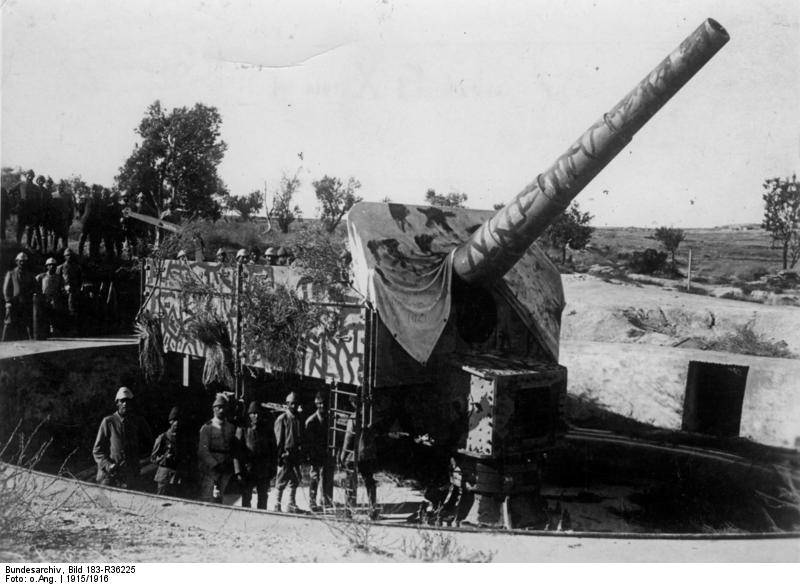
The fact that the Russian batteries almost did not play any role in the defense of Moonsund in 1917, says not about the weakness of coastal artillery, but only about the propaganda of the troops, completely lost their stamina and every desire to fight. In general, it should be considered that the mine-artillery positions defended by modern coastal artillery are capable of stopping the enemy’s many-times superior naval forces. But coastal artillery has two serious flaws that should be taken into account.
The first of these is a very high cost with any lack of mobility, as a result of which the coastal artillery could be used only to cover the most important point objects. At the same time, if the enemy will storm one of them, in all other points this artillery will be useless and will stand idle.
The second is vulnerability from the shore. So, for example, the “Zorel battery”, in the presence of determined commanders and calculations, was almost invulnerable from the sea. But no one could prevent the Germans from landing troops elsewhere on the island of Ezel (which, in fact, they did in 1917 d) and seizing the specified battery from land. But in order to reliably cover up all the dangerous areas, heavy guns were no longer enough. If we return to the operation in the Dardanelles, we will see that despite the very numerous artillery (both stationary coastal defense and field defense), the Turks still could not prevent the landing of the landing forces. True, their very selfless defense did not allow the troops to perform the assigned tasks, and as a result, the latter were evacuated.
Of course, you can build a whole system of coastal batteries and cover them with bastions from land, creating a first-class fortress, capable of defending against sea and land opponents with equal effectiveness. But the cost of such structures is extremely high. For example, the cost of the Revel-Porkalaud position covering the entrance to the Gulf of Finland and part of the Peter the Great Fortress was estimated at 55 million rubles. Almost the full price of two Sevastopol battleships! It should be borne in mind that:
1) the above-mentioned 55 million included only coastal installations, without creating defensive positions against the land enemy;
2) in itself, the Revel-Porkalaud position did not guarantee the protection of the Gulf of Finland against invasion and could only protect it in conjunction with a strong Baltic fleet.
In general, mine-artillery barriers protected by coastal artillery can be considered a very effective defense against a superior fleet, but such defense is not self-sufficient and cannot guarantee protection of the coast as a whole. Coastal artillery can cover only some of its most important points and needs other means of naval warfare to supplement it.
Consider now the heavy artillery ships. As Moonshund’s experience has shown, the mine-artillery position offers significant advantages to the ships defending it and makes it possible to withstand a much stronger enemy. Of course, it can be argued that in both cases, conducting operations in 1915 and in 1917, the Germans achieved their goals, and the naval forces of the Gulf of Riga could not prevent a rush into the Gulf of Riga, and in 1917 they lost the battle of the Great Zund.
But ... If “Glory” alone on the open sea would have fought with 4-th squadron Hohzeeflott, which included seven battleships like “Alsace” and “Braunschweig”, then the Russian battleship could hardly hold out even for an hour. But defending the mine-artillery position, "Glory" not only did not die, but also forced the Germans to interrupt the operation and retreat. Gunmen Nassau and Posen at sea would have shot Glory in half an hour, but at the mine-artillery position Slava held them back for a day, and only on the second day of the operation did the German dreadnoughts manage to break into the Gulf of Riga. Even the "Koenig" and the "Kaiser" could not destroy the ships of M.K. Bakhirev from the first attempt, though, happen to "Glory" and "Citizen" to fight the battleships Benke in the open sea ...
The battle of heavy artillery ships in a mine-artillery position was characterized by the following features:
No matter how superior the enemy was, he used only a small part of them to cover the mine caravan. So, the Germans in no case attracted more than two heavy ships: 26 July 1915, it was the Alsace and Braunschweig, 3-4 of August of that year - Nassau and Posen, and in October 1917. - “Koenig” and “Kronprinz”. Usually, in addition to the battleships, the enemy also included two light cruisers into the squadron of the sweeping caravan.
According to the author of this article, "Glory" was a more sophisticated ship than the battleship of the type "Brunswick". It is likely that the Germans thought otherwise, believing that the ships of these types are equal in their fighting qualities. But on July 26, they put two ships against the same "Glory" and did not succeed. It would seem that something too simple: add another one or two battleships, providing an advantage of one to four, but this was not done. Instead, Nassau and Posen were sent into battle.
But the German plan of the operation was being built in the hope of luring four battleships of the “Sevastopol” type from the Gulf of Finland to help them in order to destroy them in a general battle. Of course, the Russian dreadnoughts were sitting too deep to pass the Moonsund Strait into the Gulf of Riga. In order to throw "Sevastopoli" into battle, it was necessary to lead them through the throat of the Gulf of Finland to the open sea. And 4 Squadron Hohzeeflotte looked like an ideal bait for this: even if numerous, the old ships gave a strong temptation to the Russian command to crush the forces storming the Irben Strait with one blow. Another question is that on the road to the Irbens, eight dreadnoughts and three battlecruisers of Hochseeflott were waiting for the four Russian battleships, but it was assumed that the Russians did not know about it.
The Russians, having received the ciphers of the German fleet from the wrecked cruiser “Magdeburg”, knew about this intention of the Germans, but the German commander, of course, could not presume such. Accordingly, he should have concealed the presence of his dreadnoughts in the Baltic, presenting the case as if the Germans did not have more seriousness for Moonund than the old battleships. And yet, to continue the operation, he sends Irben “Nassau” and “Pozen” to break through. Why?
We can assume the following.
First, it is likely that the trawling caravan had a limitation on the width of the trawling lane. This, in general, is understandable: the narrower the fairway, the easier it is to sweep, the less chance for a minesweeper to be blown up by a mine, and if there are an abundance of minesweepers, then it is probably better to play it safe by letting them into several echelons in order to maximally exclude missed mines. Despite the involvement of significant minesweeping forces (39 minesweepers on July 26, 1915), only two battleships were assigned to cover the trawling caravan. In the second phase of the battle on October 4, the German dreadnoughts followed 19 minesweepers, but the Kronprinz nevertheless followed the Koenig, albeit somewhat to the left of its course, that is, the width of their formation was probably less than if they were walked in parallel wake columns.
Secondly, the speed of the trawling caravan is very limited. Of course, in the descriptions of the performance of German minesweepers of that period, we can see the speed of movement with the trawl even 15 nodes, but it is obvious that in practice nothing like this happened. In order to pass the Irbensky Strait one should trample no more 45 miles, but on July 26 the German minesweepers, having started their work, were extremely far from its completion even at 03.50 in 13.00.
It is obvious that heavy ships, breaking through the mine-artillery position, are severely limited in maneuver and speed. Unlike the attackers, the defenders have no such restrictions, as “Glory” demonstrated in 1915 battles. The ship moved along the edge of the minefield, first from north to south, and then in the opposite direction, and when it came under fire from enemy battleships, it always had the opportunity to retreat to the east, go beyond the range of the German heavy artillery, and then start all over again.
At the same time, the main target for the artillery of the defenders are not escort warships, but minesweepers, whose disruption prevents the breakthrough. And the covering forces follow the trawl caravan and at a certain distance from the latter - at least in order to have time to stop if the minesweeper in front of them is blown up by a mine. From this it follows that the distance between the defending battleship and the minesweepers will always be less than the distance separating the defending battleship from the heavy covering ships.
Nothing prevents defenders from firing at minesweepers from a distance close to the maximum firing range. In this case, with a sufficient density of fire and with a high-quality fire control system, it is quite possible to provide covers for minesweepers. In Moonund “Glory” it was possible, although the battleship could not provide the first and did not have the second. As the practice of fighting has shown, regular coverings of the caravan are quite enough to force him to stop working and retreat, even in the absence of direct hits from the minesweepers.
It is extremely difficult for the forces of covering a trawling caravan to resist such tactics. With an equal range of firing from the ships going after the minesweepers, it may not be possible at all to fire at the enemy, or there will be much less time, because the defenders will only occasionally be within the range of the artillery of the attackers. But even in the latter case, the battleships protecting the mine-artillery position will be located on the sharp nasal corners of the bursting out, which will not allow all the heavy artillery of the attackers to be used in battle. At the same time, the defenders are able to fight all overboard. In addition, minesweepers slowly crawling forward are a much easier target for shooting than a battleship that maneuvers on 14 nodes.
If all of the above is true, then it turns out that neither three nor even four battleships of the Wittelsbach and Braunschweig type were enough to ensure absolute superiority over a single Slava while she defended a mine-artillery position. That is what made the German commander of the operation unmask the presence of dreadnoughts and send into battle "Nassau" and "Pozen." And they eventually completed their task, but the Germans managed to break through only after they had entered into battle two dreadnought against one squadron battleship! In fact, we are talking about the confrontation of ships that differ by two generations: between the “dotsusimsky” battleships and the dreadnoughts were the so-called “predreadnoughts”, which far exceeded the battleships of the preceding types in firepower.
In the Russian imperial fleet these ships were the “Andrey Pervozvanny” and the “Emperor Paul I”, and I must say that if 3 and 4 August 1915 were protected by the Irbensky Strait, not one of these ships it is not known what the matter would turn out to be. The main problem of "Glory" in the battle of 3 in August is the short range of the main caliber, which the commander and crew had to fill with artificial lurch and tactical maneuvering, but which, of course, could not be fully compensated by either one or the other. But “Andrew the First-Called”, having 305-mm tower installations with an elevation angle of 35 degrees, could shoot twelve-inch projectiles at 110 kb, and 203-mm - at 95 kbt. That is, being at the limit of the range of German 280-mm guns, which from such a distance could hardly inflict fatal damage on our battleship, he could simultaneously fire at one of the dreadnoughts with 305-mm guns, and 203-mm cannons it is not known how the Germans would have liked it. In addition, it should be borne in mind that on the “Andrew the First-Called” and “Emperor Paul I” a fire control system was developed by Heusler, model 1910, and they may have had a better SLA than it was in “Glory”.
The author will also risk claiming that if the Irbensky Strait in 1915 was defended not by “Glory”, but by one of the battleships of the “Sevastopol” project, then the Germans would have had to go off without a bit of it. Because the Russian Dreadnought, with its nearly twenty-foot rangefinders (not 9-feet, as on Slava), a dozen rapid-fire guns of the main caliber, the range of 470,9 cable shells, which is two miles greater than the capabilities of guns battleships of the Nassau type, as well as armor almost invulnerable at such distances, would present a completely unsolvable problem for the Germans.
Unfortunately, the Russian command did not risk losing at least one dreadnought and did not send a ship of the Sevastopol type to Moonzund. The reason is clear: in the 1915 year, in general, no battleship could pass the Moonsund channel directly from Riga to the Gulf of Finland, so that the ship of this class, which went to Moonzund, had to win or die. So they sent the least valuable combat unit (they chose between “Glory” and “Tsesarevich”). As for 1917, despite the dredging in the Strait of Moonsund, neither the First-Called and Sevastopoli could pass through it. So, the opportunity to retreat in case of failure of Moonsund’s defense was only in the “Tsesarevich” with the “Glory”, and, again, the most experienced and “sniffed with gunpowder” crew was just on the “Glory”.
In this regard, one can only regret that when choosing the main base of the imperial Baltic fleet, we stopped at Revel (present-day Tallinn). As an alternative, it was proposed to equip such a base in Moonsund, and for this to deepen the Moonzund Canal so that they could pass ships of all classes of the domestic fleet. If the variant with the base of the fleet in Moonsund was accepted, then there is no doubt that in 1915, an attempt to break into the Gulf of Riga would run into the horizon of the twelve-inch guns of the newest Russian dreadnoughts - with a very sad result for Kaiserlmarine.
The main reason why the Germans succeeded in breaking through to the Gulf of Riga in 1915 and the success of Operation Albion in 1917 was not at all the perversity of the idea of a mine-artillery position as such, but in the overwhelming quantitative and qualitative superiority of the German material. The Germans surpassed the “Glory” decisively in everything: the number of artillery barrels of the main caliber, firing range, rangefinders, SLA, etc. and this superiority eventually nullified the advantages of the Russian position. In 1917, the problem of hydrography was added to this excellence. Battleships M.K. Bakhirev was extremely constrained by the fairway of the Great Sound, and almost could not maneuver, becoming a floating battery.
From the above, we can draw the following conclusion: mine artillery position as a form of coastal defense in the first world war fully confirmed its worth as a means of allowing the weakest fleet to defend against the strongest attacks. But only when one of its most important features is taken into account: mine and artillery position compensated only for quantitative, but not qualitative weakness of the defending forces.
In other words, in order to successfully defend a mine and artillery position from attacks by squadron battleships, equivalent squadron battleships were required, albeit in smaller numbers. In order to resist the dreadnoughts attack, dreadnoughts were needed. It was impossible to protect the mine-artillery position by weaker types (and even more so - classes) of ships.
According to the results of the moonsund fights, it can be assumed that the four Russian “Sevastopol” with the support of coastal artillery of the Revel-Pkalaud position could indeed repel an attack of at least a dozen dreadnoughts of Hochseeflotte (at least until the appearance of the kayzerlmarmar margins are supernaturals. Baden "with their 380-mm main caliber) and do not miss the German ships into the Gulf of Finland. But neither four, nor eight, nor twelve battleships of the “Glory” type, no number of monitors, coastal defense battleships and so on could have done this.
It is known that the tsar’s dreadnought construction program in the Baltic is now periodically criticized. At the same time, its main thesis is that, since we still could not achieve equality with the German High Sea Fleet, it did not make sense to begin, that our dreadnoughts were still doomed to defend themselves in the bases when the war began, which means there was no need spend large funds on their creation.
But in fact, only the presence of dreadnoughts as part of the imperial Baltic fleet guaranteed the inviolability of the Gulf of Finland, and if the command had ventured to send a ship of this class to Moonsund, then perhaps Riga.
Concluding the series of articles about the battles of "Glory" and the defense of the Moonsund Archipelago, I would like to note the following. In the eyes of modern researchers, the reputation of Admiral MK Bakhirev was heavily tarnished by the results of the battle he had failed in Gotland, in which, despite the general superiority in forces, the Russian fleet achieved more than modest successes. As a result, the characteristic of an indecisive and non-independent naval commander stuck to the admiral.
But under the conditions of 1917 of the year, after the February Revolution and the March slaughter of naval officers that followed, which began when the sailors lifted the watch of the watch lieutenant V.G. Bubnova, who refused to change the flag of St. Andrew to the revolutionary red (the battleship “Andrey Pervozvanny”), Mikhail Koronatovich showed himself desperately brave and skillful commander.
The very fact that he remained at his post when confusion, vacillation and unwillingness to fight were spread in the army and navy, when insubordination to officers became the norm, and not the exception to the rule, when the activity of commanders was put under the control of ship committees, when officers they could not know what should be feared more: the superior forces of the German fleet, or the treacherous bullet in the back from unwilling to carry out the combat order of the “comrades”, says a lot.
Dry lines report M.K. Bakhirev on Moonsund’s September 29 Defense - October 7 1917 cannot convey the tragedy of the situation in which Russian naval officers found themselves, who risked remaining on duty and fulfilling their duty:
In light of the above, it is not so easy to blame Rear Admirals Sveshnikov and Vladislavlev (commandant of the Moonsund fortified area and the head of the submarine division) of cowardice when they arbitrarily abandoned their posts. But Mikhail Koronatovich tried to find some bright sides in the current situation:
WHOLE half!
M.K. Bakhirev correctly saw the danger of the assault on Dago and Ezel and demanded the deployment of additional artillery to protect them. But the fleet headquarters did not believe in this possibility and did not find any tools for the admiral.
The Germans began the invasion and the admiral's suspicions were “brilliantly” confirmed. Strong pressure is put on the forces entrusted to his command: the enemy has attacked both the islands and the Irben Strait and Soelozund. Everything is crumbling around like a house of cards: the garrisons are not fighting, the minelayer cannot be persuaded to throw mines, the base of the Irben defense, the “Tserel battery” has treacherously capitulated ... And in this situation M.K. Bakhirev manages to bring the ships entrusted to him to battle with the enemy many times superior to his forces. The admiral gave a battle at the Bolshoi Zunda with the expectation of a meager chance to hold the position and save the defense of the Moonsund archipelago. In battle, he acted flawlessly, not allowing any tactical error, but the obviously superior German forces, given the presence of Russian minefield maps, did not leave Mikhail Koronatovich with a single chance.
Actions M.K. Bakhirev in Moonsund should be recognized as skillful and heroic, and taking into account which teams were on his ships - doubly heroic. Of course, the "grateful" country "in full" rewarded him for his valor on the battlefield.
Already on January 2, 1918, the admiral was dismissed without the right to receive a pension, and in August of that year he was arrested and released only in March 1919. But he did not flee the country, but became an employee of the operational department of the Marine historical Commission (Moriskoma). In November 1919, Mikhail Koronatovich was arrested again, on charges of promoting the rebellion of Yudenich. On January 16, 1920, the admiral, so bravely fighting the superior forces of the German fleet, was shot.
List of used literature:
1. Bakhirev M.K. Report on the actions of the Naval Forces of the Gulf of Riga 29 September - 7 October 1917
2. Vinogradov S.E. Battleship "Glory". The undefeated hero Morezund.
3. Kosinsky A.M. Moonzund operation of the Baltic Fleet 1917
4. Melnikov R.M. Armored cruisers of the type "Admiral Makarov" (1906-1925).
5. Melnikov R.M. Tsesarevich.
6. Muzhenikov V.B. Battleships of the Kaiser and Koenig types (1909-1918).
7. Muzhenikov V.B. German battleships Part 1: Nassau, Westfalen, Rhineland, Pozen.
8. Taras A.E. First World War at sea.
9. Timirev S.N. Memories of a naval officer. Baltic Fleet during the time of war and revolution (1914 — 1918).
- Andrei from Chelyabinsk
- Four "Glory" battles or the effectiveness of mine and artillery positions (part of 5)
Four "Glory" battles or the effectiveness of mine and artillery positions (part of 4)
Four "Glory" battles or the effectiveness of mine and artillery positions (part of 3)
Four "Glory" battles or the effectiveness of mine and artillery positions (part of 2)
Four "Glory" battles or the effectiveness of mine and artillery positions (part of 1)
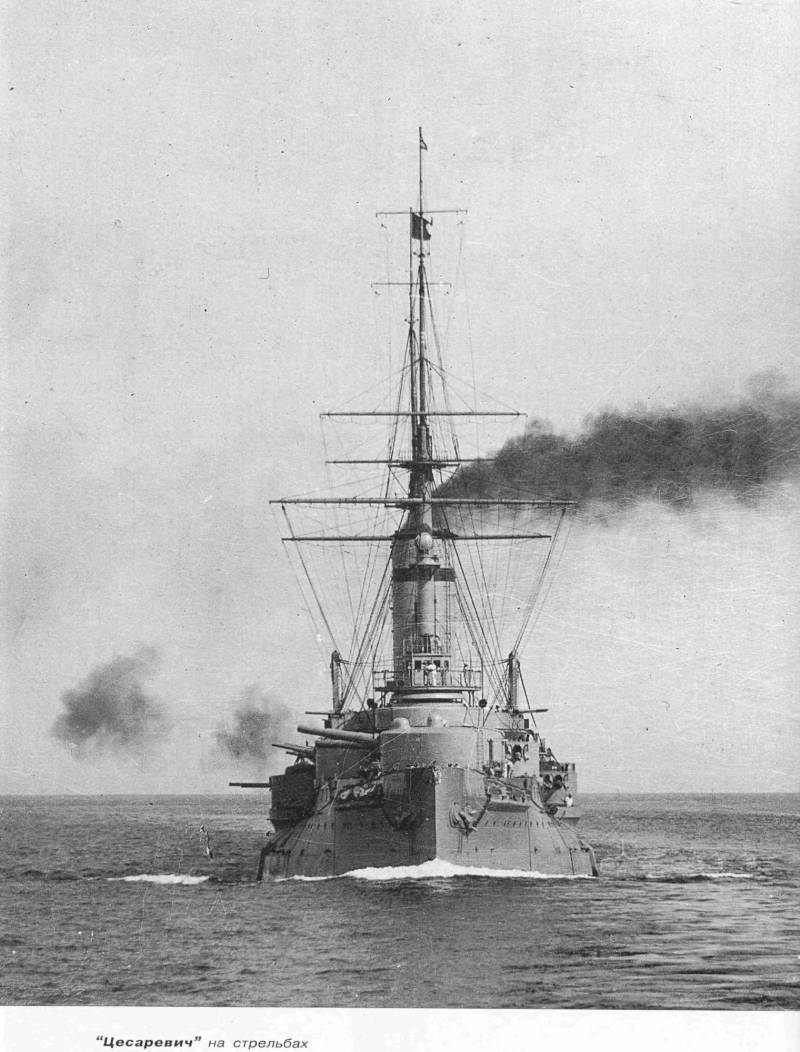
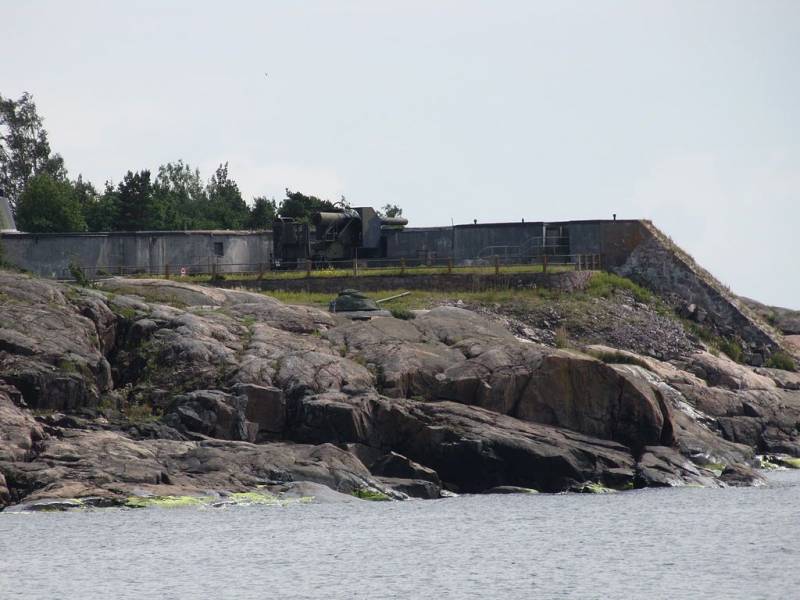
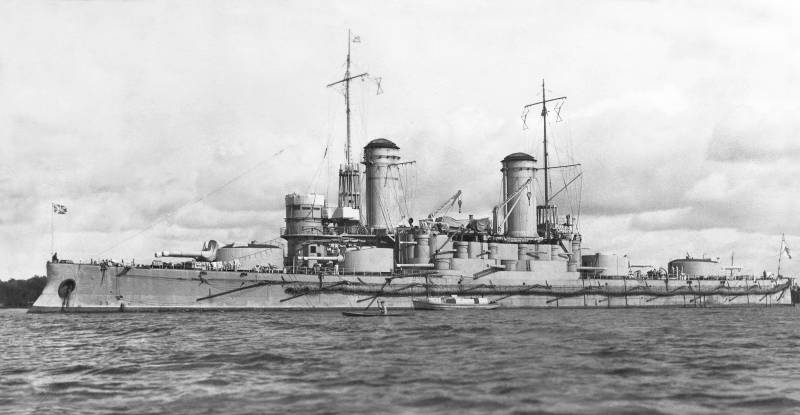
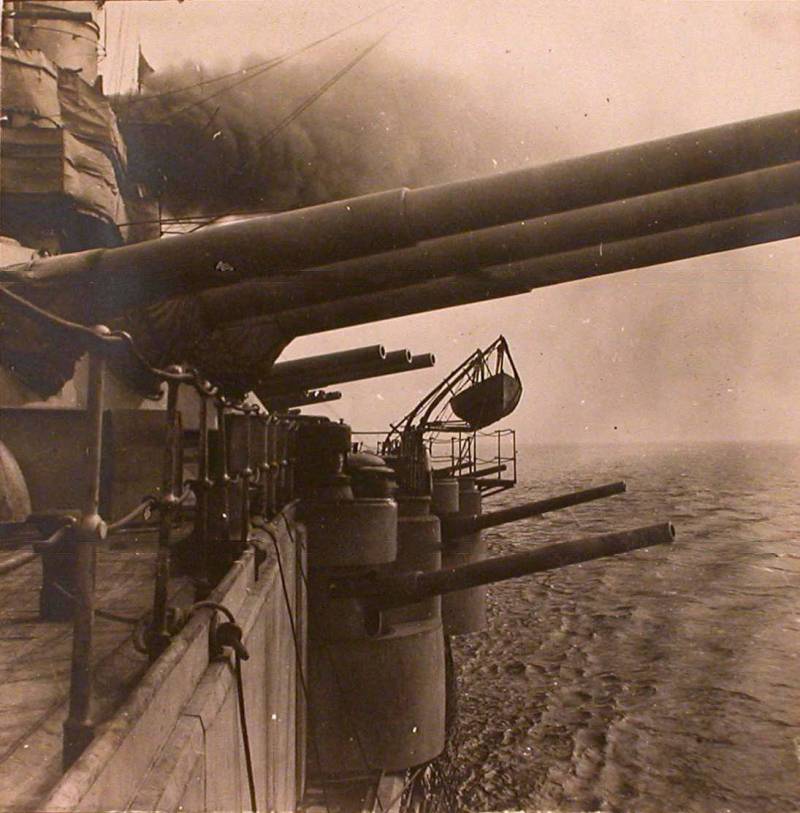
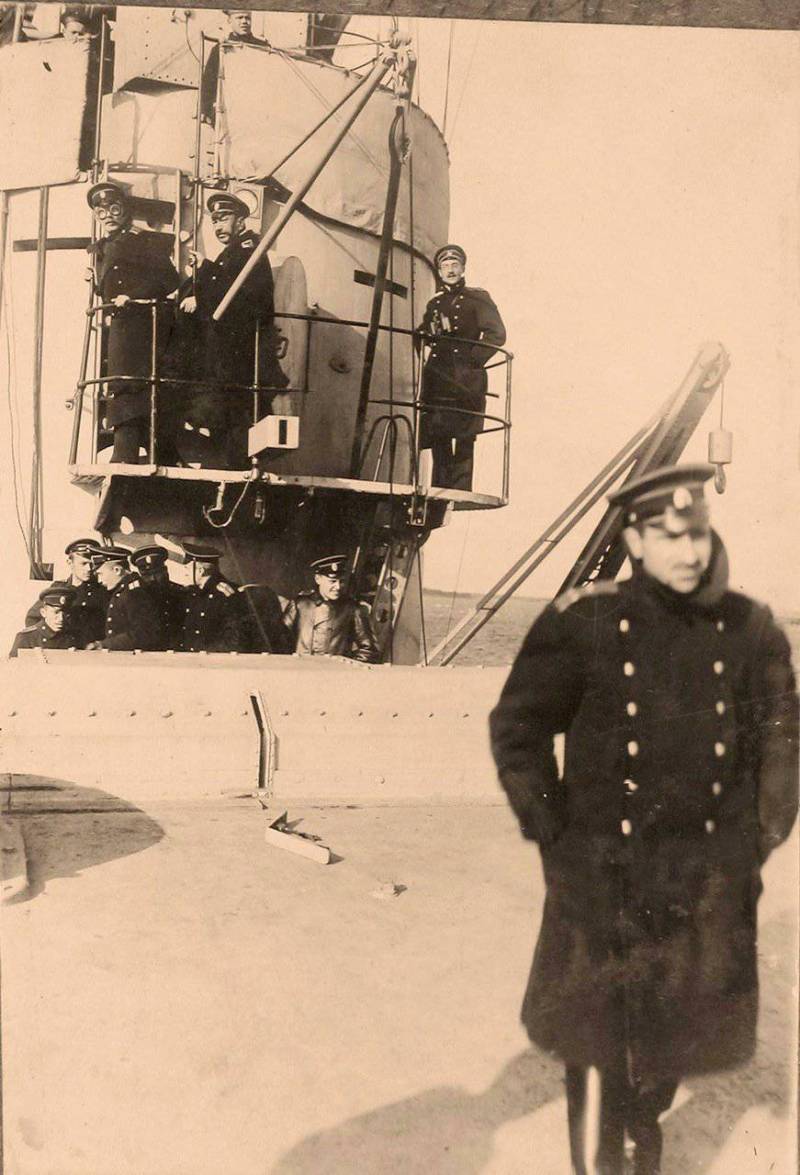
Information